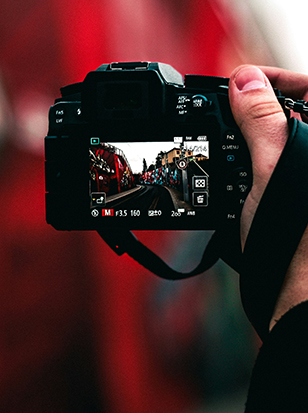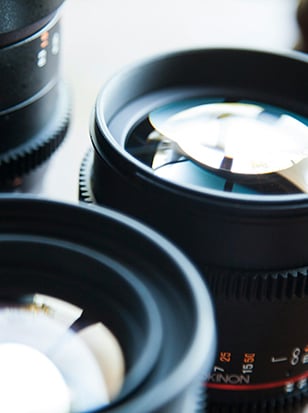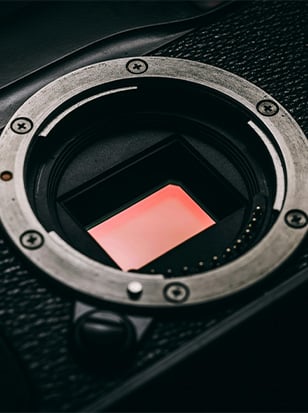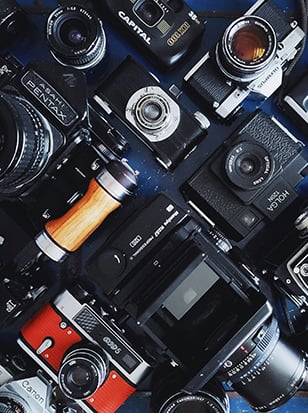
We’ve seen plenty of photo and video goodies in May. Fujifilm has definitely caused the biggest stir, with its interesting and even somewhat divisive Fujifilm X-Half, a digital compact that shoots images in 4:3 format and even features a manual shot advance lever.
We’ll dig more into that shortly, but also this month we’ve seen a new full-frame camera and lens from Panasonic, as well as a cine camera in Sony’s FX series. Then there’s also the matter of the next generation of drone imaging, courtesy of DJI and the fabulous Mavic 4 Pro. Lots to see, lots to get excited about — here’s the rundown of what you need to know.
|
Sensor: 17.74MP 1-inch back-illuminated Lens: 32mm F2.8 ISO range: 200-12,800 Stabilisation: None Weight: 240g |
Undoubtedly the most talked-about release from this month is the Fujifilm X-Half, a lightweight digital compact inspired by half-frame film cameras. Half-frame cameras double the shots you get from a roll of film by only using half a frame per exposure, resulting in a narrower image. The X-Half evokes this with its unusual 3:4 images, producing images that display well on vertical mobile screens.
The camera is all about embracing analogue-style knockabout shooting. Fujifilm’s iconic FIlm Simulations are of course present and correct, including the new REALA ACE mode that delivers accurate colour rendering with well-controlled contrast. You can also digitally add filmic effects to your images with the Light Leak, Halation and Expired Film modes, and there’s even a manual frame advance lever!
Stick the X-Half in Film Camera Mode, and it’ll disable the LCD screen, meaning you need to compose using the optical viewfinder, and it’ll lock in the Film Simulation mode until you’ve completed a “roll” of 36, 48 or 72 shots. Once you’re done, you send these “negatives” to your phone via the X-Half app, and you’ll be able to see what you’ve shot. In terms of a digital recreation of a film-shooting experience, this is probably about as close as we’re going to get.
If the Fujifilm X100 cameras are a digital equivalent of shooting on something like a classic Leica M6, the Fujifilm X-Half can be considered more the cousin to a charming little compact like the Kodak H35N — without the ongoing cost of buying and developing film.
|
Sensor: 33MP full-frame Exmor R CMOS Video: 4K up to 60p (S35 crop), oversampled from 7K; Full HD up to 120p ISO: Dual Base ISO at 800 and 4000 (S-Log3) Autofocus: AI-powered real-time tracking with subject recognition Viewfinder: 3.68M-dot OLED EVF with 90° tilt |
The Sony FX2 is a new entry to Sony’s cine camera range – essentially a younger sibling to the FX3, but with some notable differences that make it stand out. It features a 33MP full-frame sensor, which is a step up from the 12MP sensors found in the FX3, FX6 and A7S; this allows you to oversample 4K footage from a 7K image.
The result of this is that the FX2 captures footage with a hugely impressive level of detail, and with less noise in low-light situations when you downscale from that 7K footage to 4K. It can also shoot 4K up to 60p, though this isn’t oversampled. Here, it uses a Super 35mm crop (around 1.5x), which essentially gives you two focal lengths from a single lens, giving you more flexibility when shooting with primes.
Sony’s excellent autofocus system really comes into its own here, giving you the confidence to focus on framing your shot while the AF works its magic in the background. The FX2 also offers 5.5 stops of in-body image stabilisation, with an active IBIS mode for even smoother handheld footage, which is great for on-the-go shooting. And of course, Sony’s renowned colour science gives you the flexibility to grade as you see fit while ensuring your footage always looks vibrant and natural straight out of the camera.
|
Sensor: Full-frame 24.1MP Processor: Venus Engine Autofocus: Phase Hybrid AF with 779 focus points and AI tracking Video: 5.9K 60p, 5.8K Apple ProRes, C4K 120p Stabilisation: 8-stop in-body stabilisation system with no crop |
Many of Panasonic’s mirrorless cameras are geared towards video, and the Lumix S1 II pushes things one step further, with a raft of new features designed to tempt the serious videographer. Its sensor uses a partially stacked design, allowing for faster readout speeds, and what this means in layman’s terms is a significant 1.6x increase in autofocus speed, as well as higher frame rates in high-resolution video modes.
The Lumix S1 II can record 5.1K open-gate video (meaning it uses the full width of the sensor) at up to 60p, and 6K open-gate at 30p. It can also capture ProRes internally when CFexpress cards are used, or for efficient high-bitrate capture it can also record directly to a solid-state drive (SSD) via a USB connection. There are also real-time LUTs, V-Log, full 10-bit workflows — we could go on, but suffice to say, the Lumix S1 II is cinema-ready and equipped for demanding video workflows.
Panasonic has also beefed up this camera’s audio capabilities — it can record in 32-bit float format when paired with the DMW-XLR2 adapter (sold separately), and it also offers four-channel audio capture and linear PCM recording formats.
|
Focal Length: 24–60mm Maximum Aperture: f2.8 Filter Thread: 77mm Weight: 544g Build: Dust, splash and freeze-resistant |
Built for full-frame L-mount cameras such as the Lumix S1 II, Panasonic’s new Lumix S 24-60mm f2.8 is a standard zoom that has been optimised with a number of video-friendly features. It supports Panasonic’s Hybrid and Crop Zoom functions, which mean that the 60mm telephoto end can be digitally extended up to 187mm without sacrificing image quality or autofocus responsiveness.
Elsewhere, this is a pretty premium zoom up and down. The constant maximum aperture of F2.8 maximises shooting flexibility in challenging lighting situations, and the advanced optical construction of 14 elements in 12 groups includes three aspherical, one UED, and two ED elements. These ensure top-tier sharpness throughout the full extent of the zoom range, and edge-to-edge clarity with minimal distortion or aberration.
It’s designed foremost for video, but the lens should also prove useful to hybrid shooters who want to capture a mix of video and stills using their L-mount camera.
|
Main camera: 100MP Four Thirds Hasselblad Additional cameras: 1/13-inch and 1/1.5-inch large CMOS dual tele Video: 6K 60p, 4K 120p Weight: 1,063g Flight time: 51 minutes |
The next generation of aerial imaging is here. The DJI Mavic 4 Pro, equipped with a seriously powerful triple-camera array, radically expands the possibilities of drone video and photography.
The star of the show is its main camera unit, a 100MP Four Thirds sensor made by Hasselblad, supporting Hasselblad Natural Color Solution (HNCS) for impressive colour fidelity, and producing fantastic imagery even in low light thanks to its F2 maximum aperture. But don’t sleep on the other two cameras, a pair of telephoto lenses comprising a 40MP 1/13-inch sensor with a 70mm f2.8 medium telephoto lens, and a 50MP 1/1.5-inch sensor with a 168mm f2.8 lens, enabling you to capture high-quality images at distance.
Flight-wise, the Mavic 4 Pro is more capable than ever, with a new Infinity Gimbal that supports creative shooting angles. It’s aided by better-than-ever Subject Tracking, with ActiveTrack 360° keeping hold of subjects even in dim lighting conditions.
Bear in mind however that as the Mavic 4 Pro weighs considerably more than 250g, its use is subject to certain regulations — head to our primer on the Drone Code to make sure you’re up to date.
|
Sensor: 60MP full-frame BSI CMOS with Triple Resolution Technology (60/36/18MP) Processor: Maestro III Focusing: Rangefinder ISO range: 64-50,000 Storage: 25GB internal storage, SD card slot (UHS-II) |
The sublime Leica M11-P gets a safari-themed reskin — and it’s as fabulous a camera as ever in these colours. Classic rangefinder focusing meets cutting-edge digital technology in the form of a triple-resolution 60MP full-frame sensor, and in order to protect the user’s imagery in this age of digital theft and fakery, Leica has also included its Content Credentials. This gives each image captured with the M11-P a signature using C2PA-confirmed algorithm, verifying its integrity, veracity and provenance. In this edition, all this goodness is wrapped in a stylish olive green — also removing the Leica red dot, just like in the black edition.













